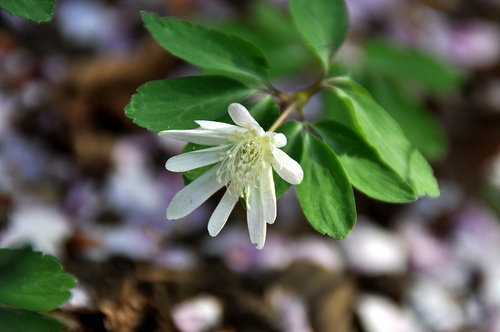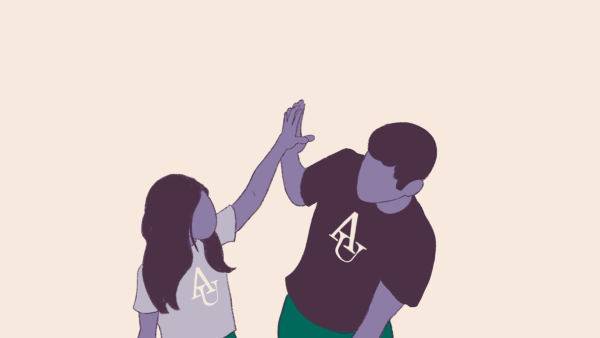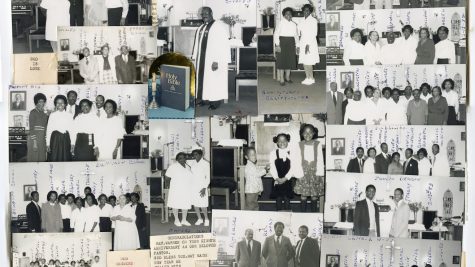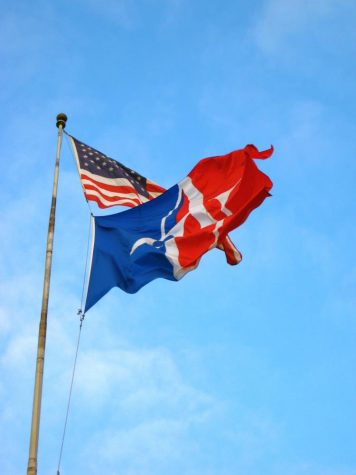Going Greener: AU’s Green Roof Initiative and Why We Should Help

American University has been recognized on several occasions for being environmentally conscious. It has been awarded the most vegan-friendly university in the United States, offers students the use of Zipcars in the Nebraska parking lot as a viable alternative to car ownership, and recently inaugurated a bicycle-share initiative. AU also has expansive recycling programs throughout university buildings and dorms in order to cut down on waste. American currently boasts five green roofs on campus, found on the Media Production Center, the Katzen Arts Center, and, as of September 2010, the Kogod building. Although students are offered the opportunity to provide manual labor in construction of these roofs, why should their involvement stop there? Recruiting students, faculty and staff to learn more about design, construction and maintenance of green roofs would promote a tradition of environmental sustainability that extends beyond the administrative level.
Green roofs have a multitude of health and environmental benefits – cleaner air, cooler cities, and less untreated storm water running into nearby rivers and streams. They can provide beautiful rooftops – picturesque common spaces for people, plants, and animals to co-exist – while effectively replacing the vegetation footprint that was destroyed when the building was constructed.
Green roofs are not to be confused with roof gardens, which, according to Professor Paul Wapner, “require more soil than a simple green roof for indigenous plants…it makes more sense to build a garden on the ground, rather than hauling water to the roof. Others, no doubt, will disagree.”
And they do. AU’s Office of Sustainability is “currently making plans to convert the entire Ward Circle building and several sections of the Mary Graydon Center rooftop to green roofs” according to Chris O’Brien, Director of Sustainability. Two of the sections of the MGC roofs will be intensive roofs, whose growing medium are especially deep and can manage a lot of storm water. These roofs will be converted into edible landscapes, where light vegetation, such as herbs, will be grown and used in the Terrace Dining Room.
“It’s more difficult to retrofit a building for a green roof rather than construct with the notion of a green roof in mind,” notes O’Brien, and this basically determines whether the roof will be intensive or extensive. Plans for converting the Ward Circle building roof into a green roof are using a state-of-the art technology that is extremely light and will be able to withstand the building’s restrictive load limitations.
The green roof on the Media Production Center covers the entire top of the building, about 6,000 square feet. The Kogod building has two green roofs, which are visible from second story windows and cover 2,500 square feet together. Both buildings have a variety of sedums — hardy succulents that can thrive on rooftops.
These roofs are an opportunity for students to learn sustainable engineering and irrigation needed to construct and maintain them. “Students have been involved in multiple stages of the design [of AU’s green roofs]”, according to Professor Wapner, and he attests that students would be able to learn the basics, “but not nearly enough to build one of their own”. However, he is hopeful that “if such a project was undertaken with student input at all stages, students could learn foundational knowledge.”
Students of all disciplines could get involved with the maintenance of these roofs. Learning the mechanics behind such a roof is not something meant just for engineering or architecture students. O’Brien says that “now, with a growing amount of experience of green roof construction on campus, if students were educating themselves on green roof construction, the Office of Sustainability would be willing to work with them to design green roofs.” O’Brien mentions that the various green roofs on campus have little maintenance – “they need to be watered a couple times in the first year and weeded a few times a year afterwards” – traditionally taken on by AU groundskeepers, but it is not something that the Office of Sustainability would be against students doing. By offering the general student body, faculty and staff more opportunities to understand and work with sustainable measures like green roofs, American can generate environmentally-conscious adults who could use that information down the line when they purchase their own homes and apartments, perpetuating a cycle of environmental sustainability.
More students, not just those in the aforementioned organizations, should take it upon themselves to be a part of maintaining the green roofs on campus, especially with an Office of Sustainability willing to work with students. With the creation of new green roofs on MGC and Ward Circle building during Spring Break, there are plenty of opportunities for students to volunteer to work on a green roof on campus. DC Greenworks will contribute to the construction of the new roofs, and can be contacted regarding volunteering.
If this university is really bent on promoting a specific “AU” culture – noting the university’s efforts to do so with this year’s new Wonk campaign – why not create a culture of sustainability? To do so, its green initiatives need to become an integral part of a typical student’s life on campus, woven into the traditions of Welcome Week, Campus Beautification Day and extra credit for classes.
How many recycle now because of the bins that are by all trash cans? It just seems natural to do so. How many notice the low-flow faucets in the SIS building? The difference is hardly noticeable, yet those faucets, combined with the dual-flush toilets, waterless urinals, low-flow showers, and low-flow kitchen sinks, save the university some 66,000 gallons of water annually. There should especially be a larger push for varied student involvement on the green roof projects on campus. Green roofs have the potential for being a school trend that can extend into students’ lives beyond this university, and AU should do all it can to ensure that with each graduating class a new batch of environmentally self-aware, self-sustaining students are entering the political, medical, legal, electrical, and athletic — among many other — workplaces.
To get involved in caring for an established green roof, students should contact the Ecosense or Green Eagles student organizations or the Office of Sustainability directly.
Photo by Kunta.Tokyo.











